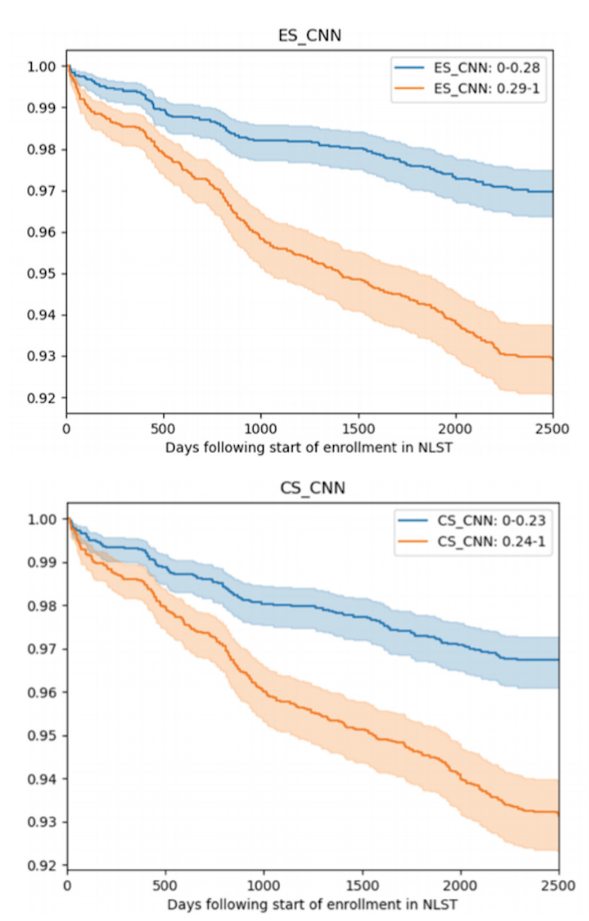Convolutional Neural Network Based COPD and Emphysema Classifications Are Predictive of Lung Cancer Diagnosis
Lung cancer is a leading cause of mortality and morbidity for patients suffering from Chronic Obstructive Pulmonary Disease (COPD). Both the presence of visually assessed emphysema on CT scans and abnormal pulmonary function tests are associated with the development of lung cancer. Based on recent results showing that convolutional neural networks (CNNs) applied to CT scans can predict spirometrically-defined COPD (FEV1/FVC < 0.7), we hypothesized that CNN-based classification of COPD and emphysema is predictive of lung cancer development in the National Lung Cancer Screening (NLST) cohort. We trained spirometric COPD and visual emphysema CNN classifiers using data from the COPDGene study. The classifiers were then used to generate COPD and emphysema scores (CSCNN and ESCNN , respectively) on 7347 CT scans from the NLST study. Cox proportional hazards regression was used to model the effects of CSCNN , ESCNN , age, body mass index, education, gender, smoking pack-years, and years since smoking cessation on lung cancer diagnosis. It was found that, individually, both CSCNN and ESCNN were statistically significant predictors (p<0.000 and p<0.000, respectively) of lung cancer diagnosis hazard.
Read Our Paper
